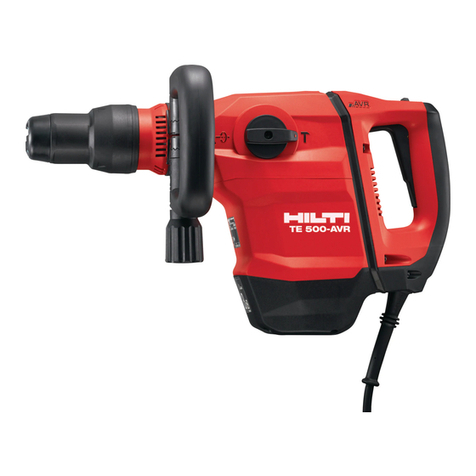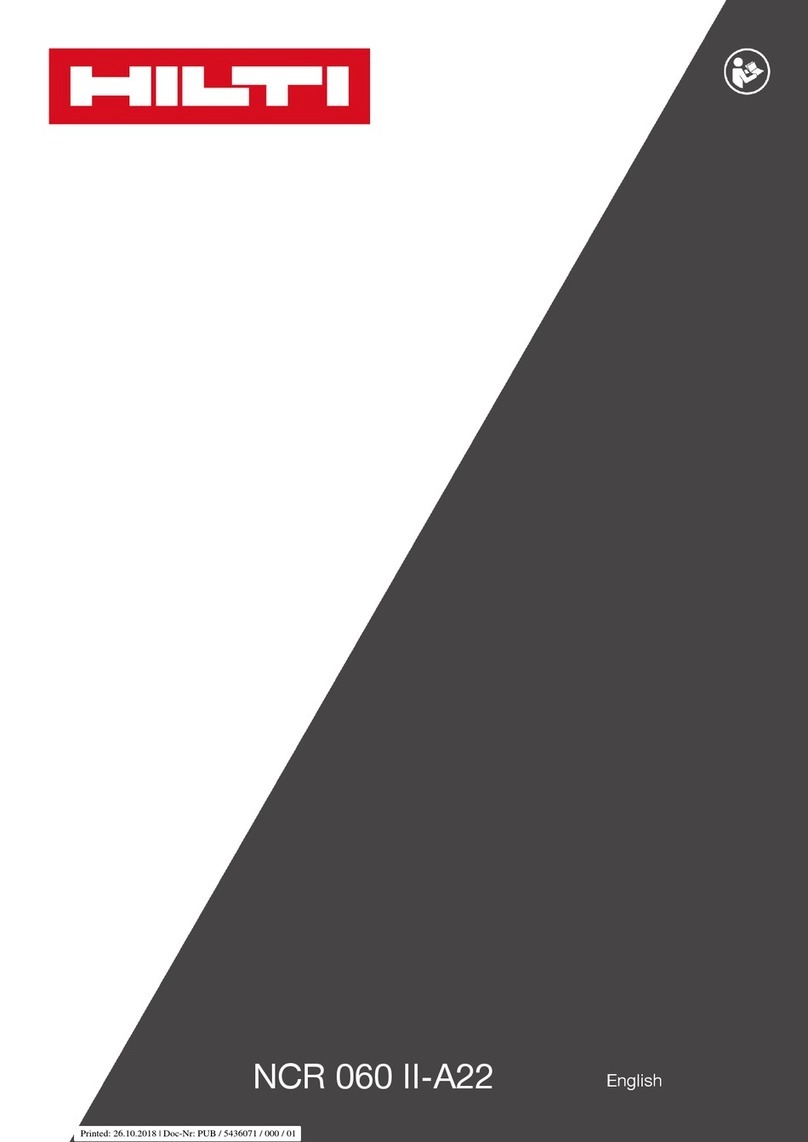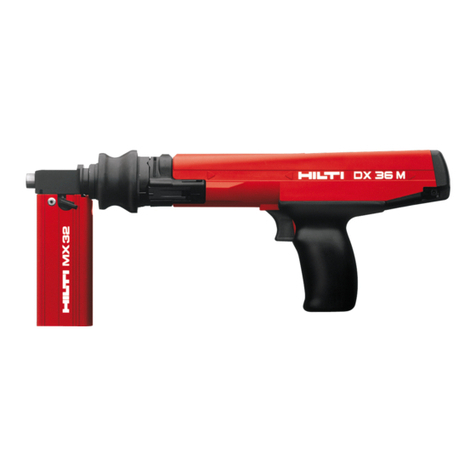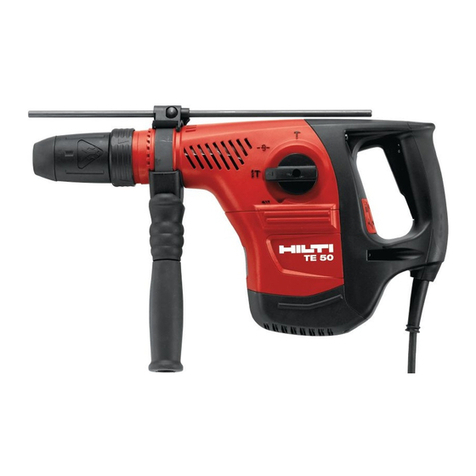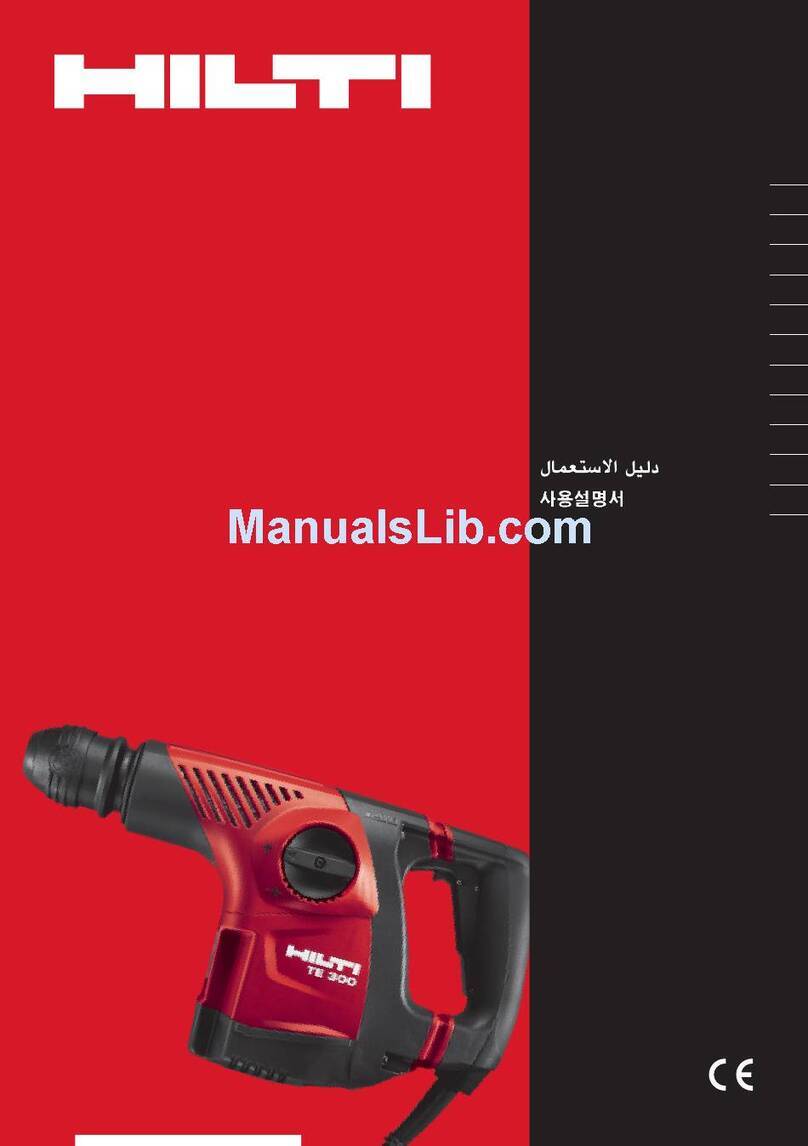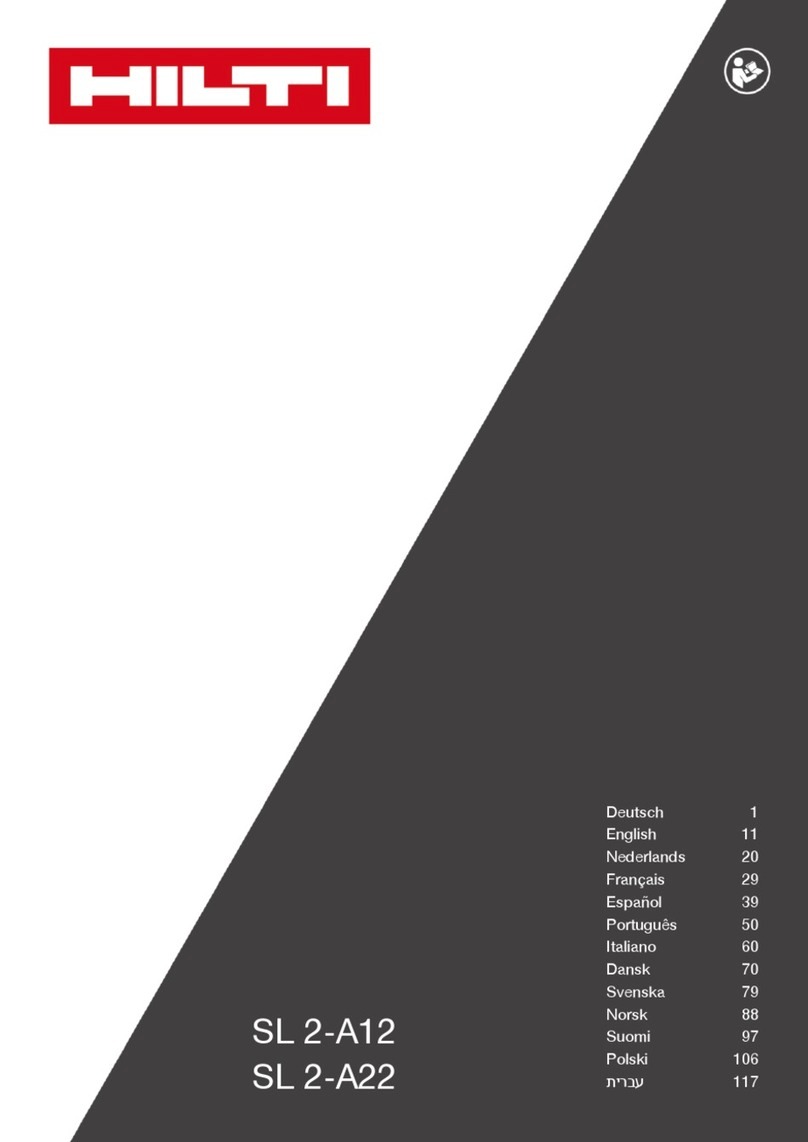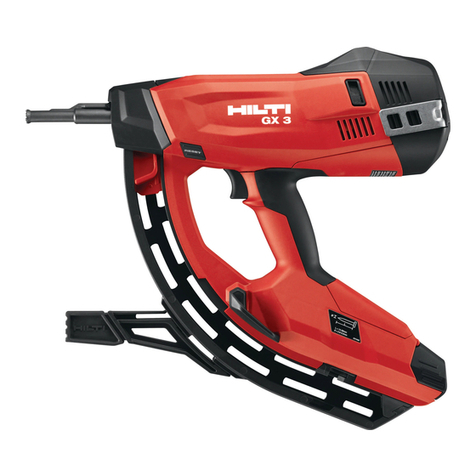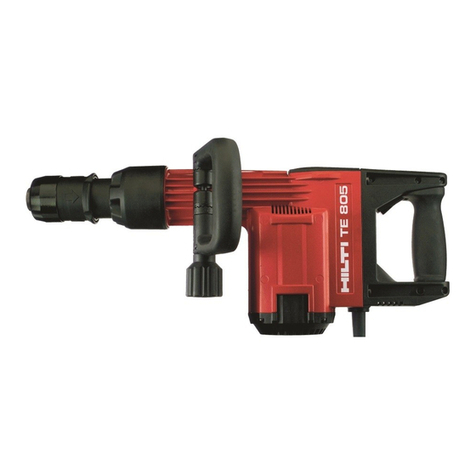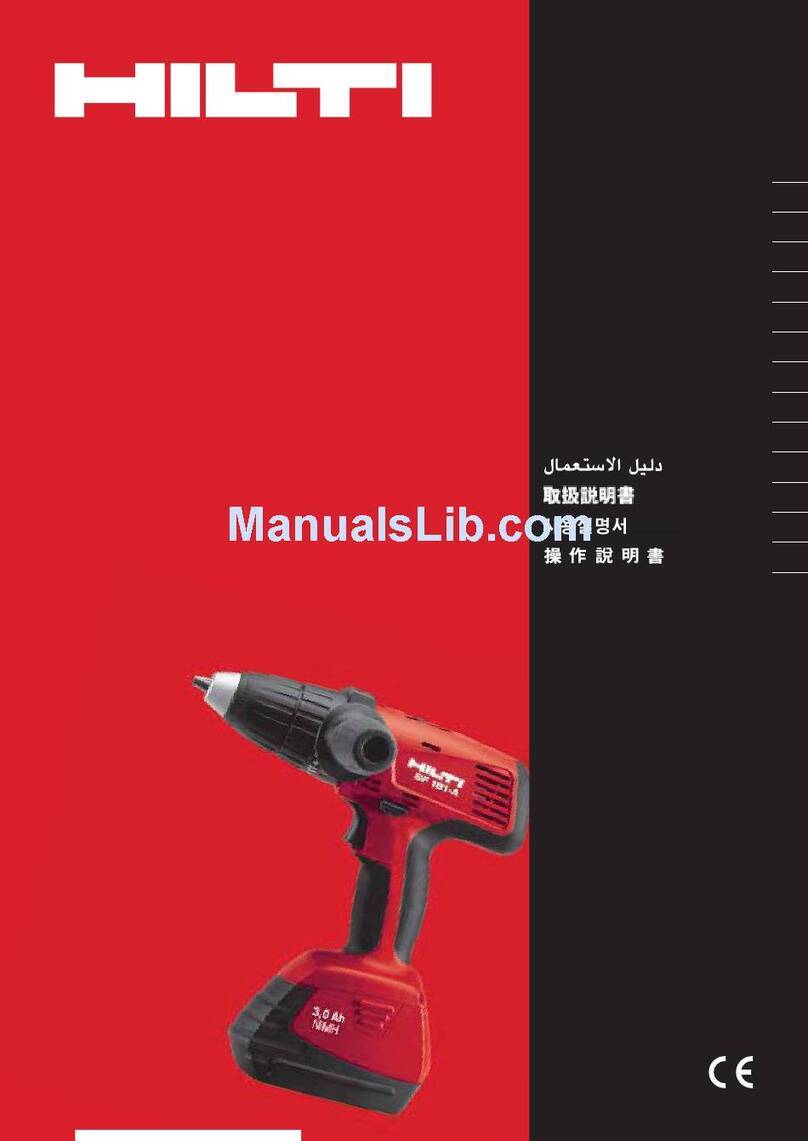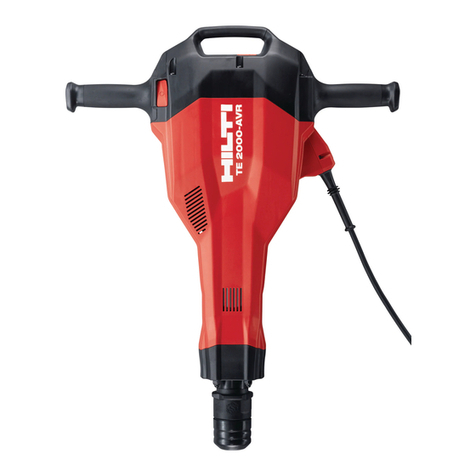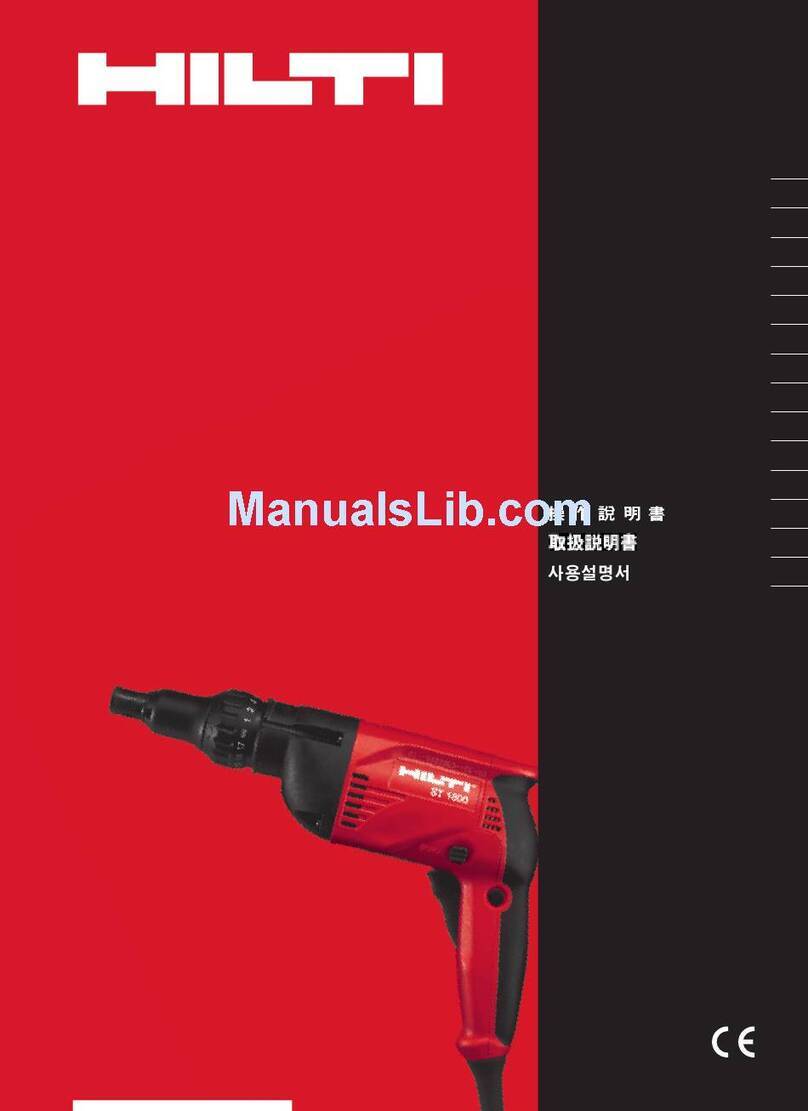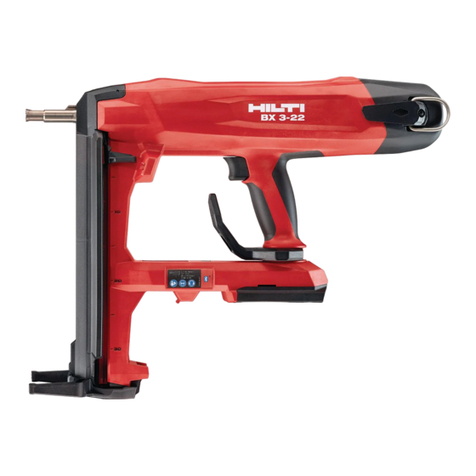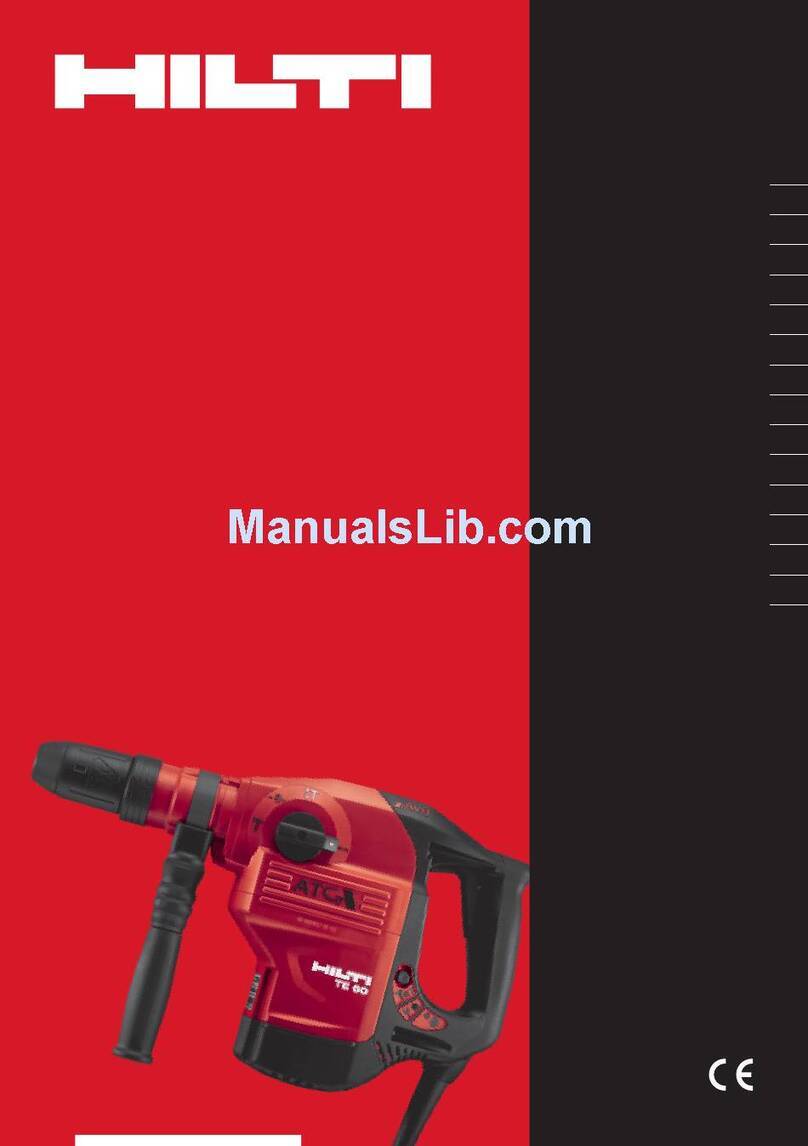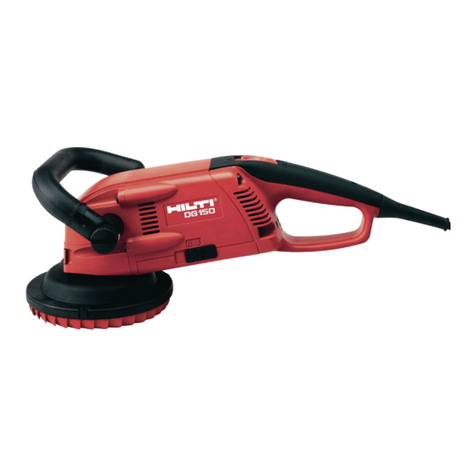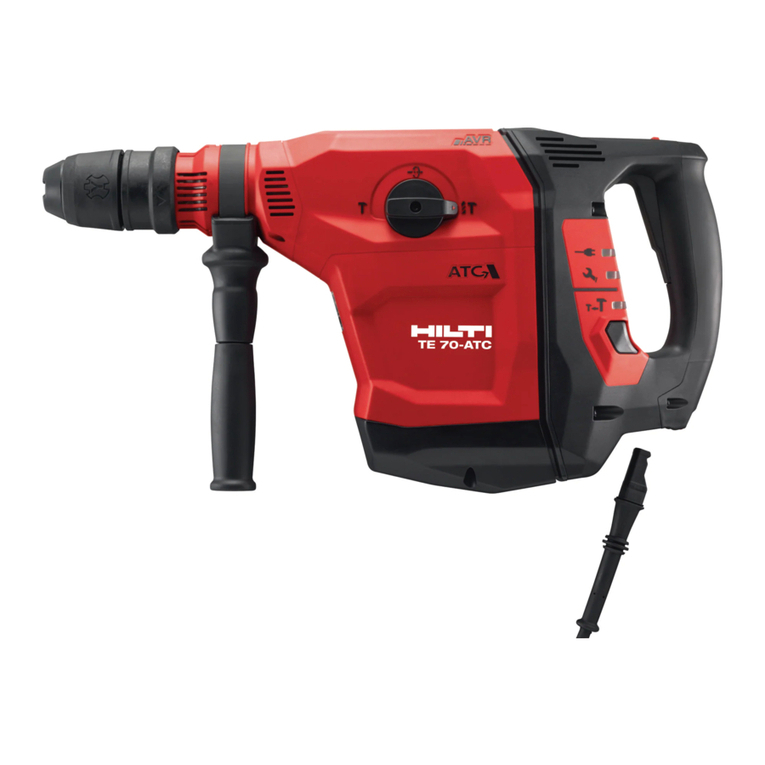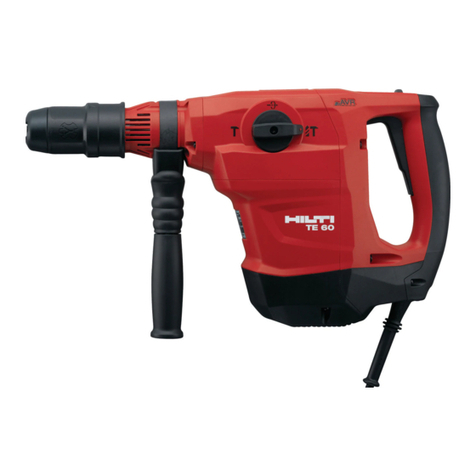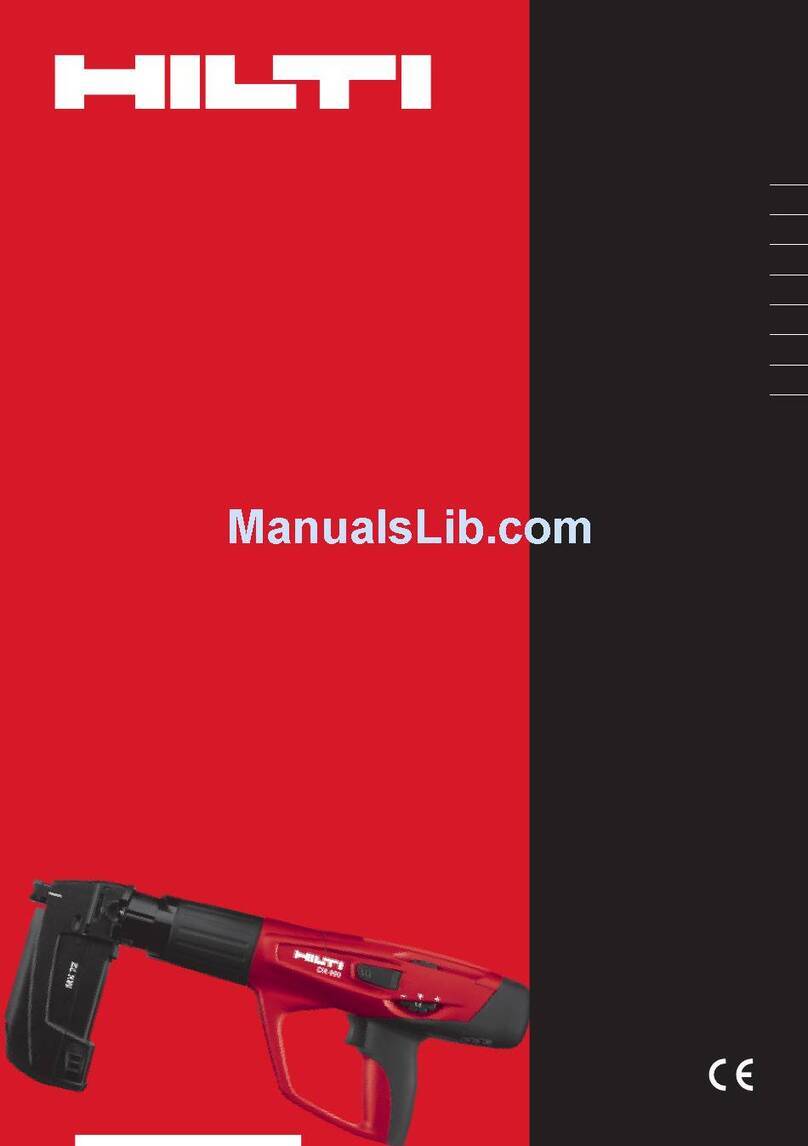15
en
will do the job better and safer at the rate for which
it was designed.
b) Do not use the power tool if the switch does not
turn it on and off.
Any power tool that cannot be
controlled with the switch is dangerous and must
be repaired.
c) Disconnect the plug from the power source before
making any adjustments, changing accessories,
or storing power tools.
Such preventive safety mea-
sures reduce the risk of starting the power tool acci-
dentally.
d) Store idle power tools out of the reach of children
and do not allow persons unfamiliar with the pow-
er tool or these instructions to operate the power
tool.
Power tools are dangerous in the hands of
untrained users.
e) Maintain power tools. Check for misalignment or
binding of moving parts, breakage of parts and
any other condition that may affect the power tool's
operation. If damaged, have the power tool repaired
before use.
Many accidents are caused by poorly
maintained power tools.
f) Keep cutting tools sharp and clean.
Properly main-
tained cutting tools with sharp cutting edges are less
likely to bind and are easier to control.
g) Use the power tool, accessories and tool bits etc.,
in accordance with these instructions and in the
manner intended for the particular type of power
tool, taking into account the working conditions
and the work to be performed.
Use of the power
tool for operations different from those intended
could result in a hazardous situation.
5.1.5 Service
a) Have your power tool serviced by a qualified repair
person using only genuine replacement parts.
This
will ensure that the safety of the power tool is main-
tained.
5.2 Additional safety precautions
5.2.1 Personal safety
a) Wear ear protection.
Excessive noise may lead to
a loss of hearing.
b)To avoid tripping and falling when working, always
lead the sypply cord, extension cord and dust extrac-
tion hose away tho the rear.
c)Always hold the tool with both hands on the grips
provided.
d)Avoid contact with rotating parts.
e)Check that the scaffold hook and belt hook are
securely attached.
f) The tool is not intended for use by children, by
debilitated persons or those who have received no
instruction or training.
g)Children must be instructed not to play with the
tool.
h)
Dust from material such as paint containing lead,
some wood species, minerals and metal may be
harmful. Contact with or inhalation of the dust may
cause allergic reactions and/or respiratory diseases
to the operator or bystanders. Certain kinds of dust
are classified as carcinogenic such as oak and beech
dust especially in conjunction with additives for
wood conditioning (chromate, wood preservative).
Material containing asbestos must only be treated
by specialists.
Where the use of a dust extraction
device is possible it shall be used. To achieve a
high level of dust collection, use a suitable vacu-
um cleaner of the type recommended by Hilti for
wood dust and/or mineral dust together with this
tool. Ensure that the workplace is well ventilated.
The use of a dust mask of filter class P2 is recom-
mended. Follow national requirements for the mate-
rials you want to work with.
5.2.2 Power tool use and care
a) Secure the workpiece. Use clamps or a vice to hold
the workpiece in place.
The workpiece is thus held
more securely than by hand and both hands remain
free to operate the tool.
b) Ensure that the insert tools used are equipped with
the appropriate connection end system and that
they are properly fitted and secured in the chuck
.
c) In the event of a power faillure, switch the tool off
and unplug the supply cord.
This prevents inad-
vertent starting when the power returns.
d) Hold tool by insulated gripping surfaces when per-
forming an operation where the cutting tool may
contact hidden wiring or its own cord.
Contact with
a “live” wire will make exposed metal parts of the
tool “live” and shock the operator.
5.2.3 Electrical safety
a) Before beginning work, check the working area
(e.g. with a metal detector) to ensure that no con-
cealed electric cables or gas and water pipes are
present.
External metal parts of the tool may become
live if, for example, an electric cable is damaged
inadvertenly. This presents a serious risk of elec-
tric shock.
b) Check the condition of the supply cord and its plug
connections and have it replaced by a qualified
electrician if damage is found. Check the condi-
tion of the extension cord and replace it if dam-
age is found.
Do not touch the supply in the event of it suffering
damage while working. Disconnect the supply cord
plug from the socket
. Damaged supply cords and
extension cords present a risk of electric shock.
c) Dirty or dusty electric tools should thus be checked
at a Hilti service center at regular intervals, espe-
cially if used frequently for working on conductive
materials. Dust (especially dust from conductive
materials) or dampness adhering to the surface of
the tool may, under unfavorable conditions, present
a risk of electric shock.
